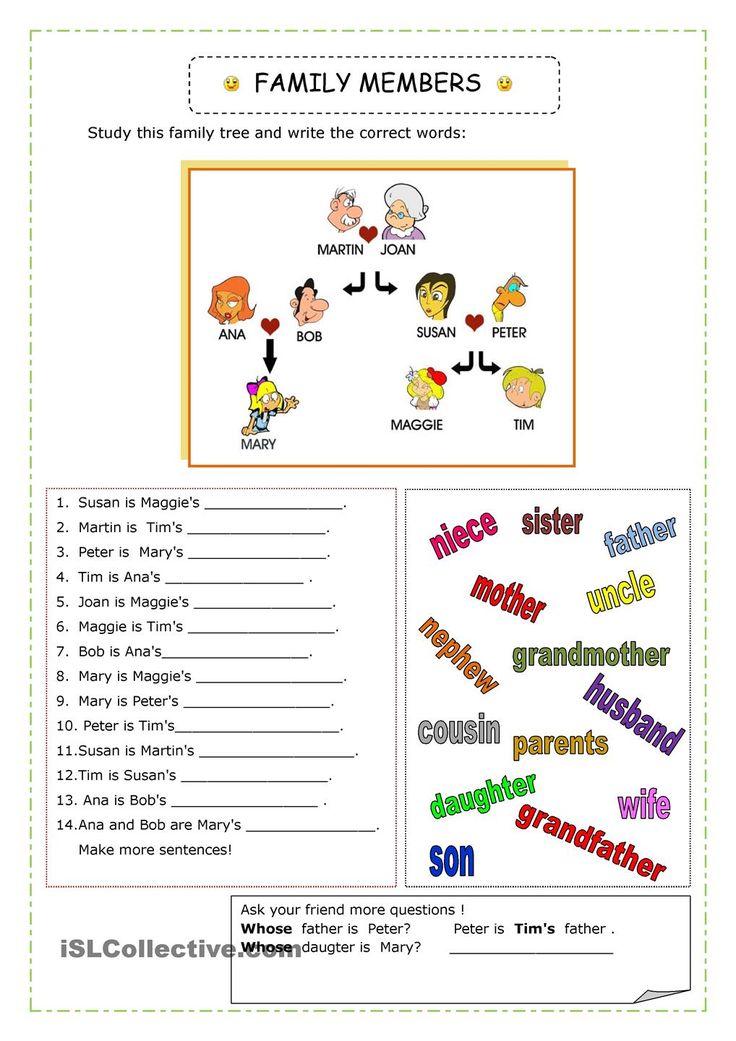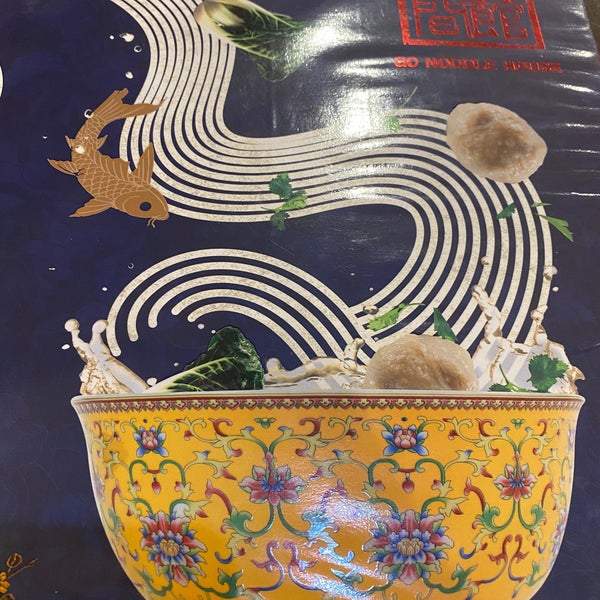Fun to learn
Help - Fun to Learn Books
Get answers quickly to these frequently asked questions.
Grammar Galaxy
The Organized Homeschool Life
Grammar Galaxy
What makes Grammar Galaxy different from other language arts curricula?
Grammar Galaxy uses the power of story to teach language arts concepts. Instead of your student forgetting dry material and having to learn the same concepts year after year, your student will master the material. Your student will learn the why of language arts and will grow in confidence. The children in the story struggle with spelling, public speaking, procrastination, and more. In other words, they’re relatable. Short lessons with lots of white space and verbal or hands-on activities will motivate your students like no traditional workbook can. Grammar Galaxy teaches skills like reading fluency and handwriting speed that aren’t found in most language arts curricula. And it’s fun!
What ages is Grammar Galaxy designed for?
Nebula is the first level in Grammar Galaxy that is for beginning readers. Once your student can read short words and is able to form letters, start Nebula. Until then, work with your preferred phonics and handwriting curriculum and keep reading to your student. Most Nebula students will be in first or second grade, but the books are intentionally left unlabeled. Students through the eighth grade who are reluctant readers or reluctant to do traditional English studies can also use Nebula.
Protostar is the second level in Grammar Galaxy that is for third graders or those who have completed Nebula or its equivalent.
Yellow Star is the third level in Grammar Galaxy that is for fourth graders or those who have completed Protostar or its equivalent.
Red Star is the fourth level in Grammar Galaxy that is for fifth graders or those who have completed Yellow Star or its equivalent.
Blue Star is the fifth level in Grammar Galaxy that is for sixth graders or those who have completed Red Star or its equivalent.
Which level should I begin with?
If you’ll be using one level with multiple ages, start at the youngest’s level. Most members of the Grammar Guardians Facebook group recommend starting with Nebula if you aren’t sure. However, you may read the scope and sequence or have your student take the placement quiz.
Can I use Grammar Galaxy with multiple ages?
Absolutely! Simply read the story to all your children. Each student will need a Mission Manual if you’re purchasing print, but only one text per level is required for a family.
Does Grammar Galaxy include religious content?
No. The author is a Christian, but Grammar Galaxy is a secular curriculum. The dedication in some volumes is “to the glory of God and future guardians of Grammar Galaxy.”
Is Grammar Galaxy Charlotte-Mason friendly?
Yes. Short, creative, story-based lessons are used to teach children. We think Charlotte Mason would have approved.
Is there a teacher’s manual?
No. No teacher’s manual is required. Solutions to missions are provided with each update letter and can be reviewed by the student independently or with the teacher, depending on your student’s level.
No teacher’s manual is required. Solutions to missions are provided with each update letter and can be reviewed by the student independently or with the teacher, depending on your student’s level.
Where are the solutions to the missions?
Solutions follow each update letter in the Mission Manual.
Do I have to have both the text and the Mission Manual?
Your student will be confused and frustrated without both books.
Can I make copies of the digital books?
Yes! You are allowed to make copies of the Mission Manual for family members living in your household. You can use the digital text on your screen while reading aloud to students. The digital Mission Manual can also be used on a tablet with a stylus. Copying the printed books is prohibited.
Do the printed Mission Manuals lie flat?
They do not. At 350 pages+, they can be written in but will not lie flat. To have books that lie flat, print the digital version of the manuals or buy print and have the spine cut off. This can be done very inexpensively at your local copy shop.
This can be done very inexpensively at your local copy shop.
How much time does Grammar Galaxy take on how many days a week?
The story and each of the three steps of the mission take 10-15 minutes to complete. Many families complete the lesson on three separate days of the week. Others choose to complete an entire lesson on one day a week. Still others want to do even more than one lesson per week. At a pace of one lesson per week, Grammar Galaxy will take 36 weeks to complete or an academic school year.
Does Grammar Galaxy work with dyslexic students and with other learning disabilities?
Definitely. It was written with special needs students in mind. The audiobook versions of texts are perfect for dyslexic students and busy teachers. Many families report that their special needs students are enjoying language arts for the first time.
Do you have any reviews I can read?
Check out the reviews here. Also join the Facebook group where you can ask questions of families who are using Grammar Galaxy now.
Is Grammar Galaxy something my student can do independently?
Yes! Once your student is reading fluently at a 3rd grade level or above, the majority of the lesson can be done independently. The activity portion of each mission usually requires teacher involvement. Teachers can read the lessons to beginning readers. Lessons take about ten to fifteen minutes a day–perfect for busy parents and short attention spans.
Can I use Grammar Galaxy as a supplement?
Absolutely! Continue your phonics and handwriting curriculum if your child is still developing as a reader and writer, and use it with other curriculum of your choice.
Do I have to use a supplement with Grammar Galaxy?
No. Grammar Galaxy is a complete language arts curriculum. Lessons are short enough to allow time for lots of other reading and writing activities. No additional writing or grammar curriculum is required. Subscribers receive a free monthly mission calendar to enhance the learning. Purchasers also have access to additional resources for each lesson.
Purchasers also have access to additional resources for each lesson.
Where is the list of books to use with Grammar Galaxy?
There isn’t one! You can use any books you choose, whether they are part of your history curriculum or just for fun. No more skipping lessons because you’ve already studied another book. If you want to do in-depth literary studies, I recommend Literary Adventures for Kids and 7 Sisters literature studies.
How does Grammar Galaxy teach spelling?
Grammar Galaxy doesn’t use spelling lists to teach because they aren’t proven to be effective. Instead, spelling strategies are presented. Families who want more focused spelling practice may want to add a curriculum like All About Spelling. Grammar Galaxy uses American English spelling but explains British English spelling differences in Blue Star.
How can I make sure my student masters the vocabulary in Grammar Galaxy?
Lessons designed to teach grade-level vocabulary should be mastered. But the vocabulary presented in the text does not have to be. Grammar Galaxy exposes students to high-level vocabulary intentionally. Repeated exposure to the words in reading and conversation will eventually produce mastery without your student memorizing definitions. However, the Flashcard & Fun packs include flashcards, slides, and games to promote vocabulary retention.
But the vocabulary presented in the text does not have to be. Grammar Galaxy exposes students to high-level vocabulary intentionally. Repeated exposure to the words in reading and conversation will eventually produce mastery without your student memorizing definitions. However, the Flashcard & Fun packs include flashcards, slides, and games to promote vocabulary retention.
How many levels of Grammar Galaxy will there be and when will they be available?
Nebula, directed at 1st/2nd grade, Protostar, directed at 3rd grade, Yellow Star, directed at 4th grade, Red Star, directed at 5th grade, and Blue Star, directed at 6th grade are currently available. Nova, directed at 7th grade will be available in 2021. Supernova and a preschool activity book will follow.
Do you ship internationally?
Yes! International shipping is free, but plan on 2-8 weeks for delivery with no tracking. We are unable to ship to Australia at this time and recommend Amazon.com.au.
How can my child get Grammar Galaxy stickers and other guardian gear?
If you are randomly selected as Guardian of the Month from people who share in the Grammar Guardians Facebook group or on Instagram using the hashtag #grammargalaxy, you will get guardian mail.
What should I do if I find an error?
In Grammar Galaxy, we call errors and typos Gremlins because he is busy creating them. Check the list of known typos that are still in print or earlier digital editions here. Report any others to the author at [email protected].
The Organized Homeschool Life
Who is The Organized Homeschool Life for?
The book and planner are designed for the Christian homeschooling mom who craves sanity in every area of her homeschool life and not just a lesson organizer.
Do I need the book and the planner?
If you know how to organize your time to complete the challenges in the book without the planner, you don’t need the planner. If you know you will just read the challenges without completing them, the planner can help you get them and the rest of your priority tasks done. The book explains each step of the challenges that are listed on the weekly pages in the planner. The planner was designed to be used with the book.
How is this planner different?
Unlike generic planners, The Organized Homeschool Life Planner is designed to help you organize each area of your homeschooling life. You will be prompted to think about what’s most important each day and to allot time for these activities. It includes all the forms you need to complete each challenge as well.
Is it a lesson planner?
It is not designed to be a lesson planner, although the planner is flexible enough to accommodate that for some families. If you have multiple children and need to add detailed lessons, I recommend The Ultimate Homeschool Planner from Apologia and planners from APlanInPlace.net.
Are the planners dated?
No. Neither the digital or print version of The Organized Homeschool Life Planner is dated, though it is organized into months.
When can I start using the planner?
Because the planners aren’t dated, you can start any time! The first months in the printed planner aren’t wasted because you can use them next year. The printed planners start in January or July.
The printed planners start in January or July.
Are all the digital pages editable?
No. Only the monthly, weekly, and daily pages are editable automatically. However, you can add text to the other pages using various apps, including the free Adobe app on mobile devices. It is possible to use the planner digitally and not print it.
Am I allowed to print the digital version?
Yes! You own it forever and can print as many copies for yourself and your immediate family as you like. You have the option of editing the pages before printing or printing and then completing them. You have the option of printing in color or black and white. You can use any type of binding system you prefer.
What size are the planner pages?
The pages are 8.5×11. It is possible to reduce the size of the digital pages before printing, but you will not have as much room to write.
Is the printed planner portable?
If you carry a large book bag or purse with you, yes. But you may prefer to take a picture of your day plan to carry with you instead.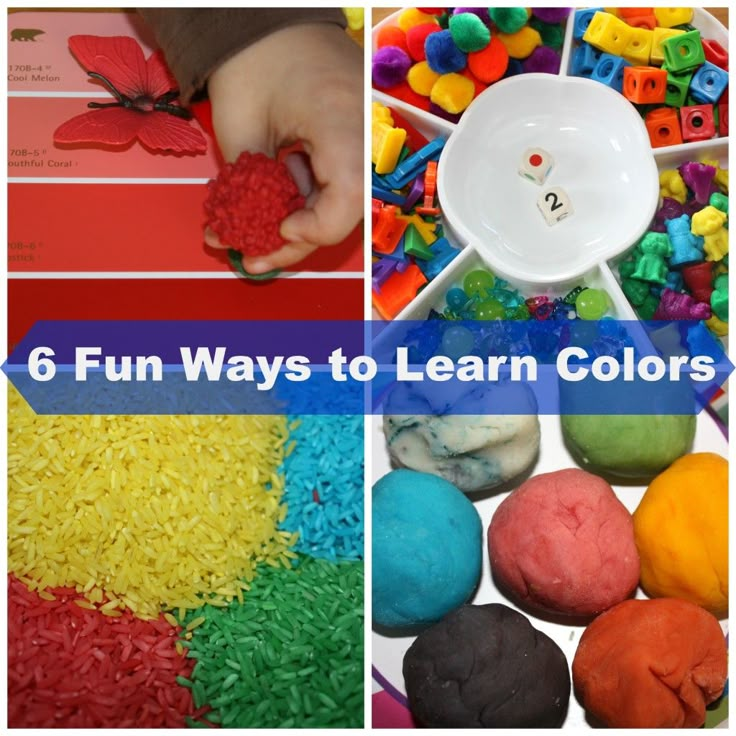
Do the books and planners ship internationally?
The books do ship for free internationally, but the planners aren’t available to ship outside the US.
Where can I find the matching planner stickers?
You can purchase them from AllDayEverydayMom’s shop.
How can I get support as I seek to get organized?
Join our free group on Facebook!
Have a different question?
Follow Us
Learn more about Fun to Learn Books on your favorite social media platform.
Facebook Instagram Twitter Pinterest Youtube
FREE SHIPPING
Available on domestic and international orders!
DIGITAL COPIES
Download digital copies of select products.
BUNDLE & SAVE
Create your own bundle of $100+ to save 10%.
SECURE PAYMENT
Checkout safely with PayPal, Amazon, or card.
20 actually fun websites to learn something new
Life
Innovations
We've got the sites for you to improve your skills.
All products featured here are independently selected by our editors and writers. If you buy something through links on our site, Mashable may earn an affiliate commission.
> Life
The pandemic has relegated millions of people to their homes, with not much to do but stare at various screens.
There's the bad screen, otherwise known as the work or school screen. Then there's the good screen, or the thing you stare at in your free time to watch TV, play video games, or mindlessly scroll through Facebook, Twitter, Instagram, and other social media.
But perhaps, after roughly four months of quarantine, it's time to introduce something akin to a useful screen. We've got free time — not really by choice, but still — so maybe you want to make the best of it. It might just be the perfect time to learn a new skill, practice a language, or any number of other useful things.
That in mind, 7 sites to learn something new that can help you learn a new skill or at least waste a little time. Here they are, in no particular order.
A free, nifty way to test — and improve — your typing speed and accuracy. Hey, you may even learn how to properly type if you've never been taught.
Similar sites:
Here's another typing test site.(opens in a new tab)
And another!
Sure, the name is crass. But it's less boring than Google and FuckingHomepage.com is updated every day with interesting facts and websites.
Similar sites:
Try this page with a poem a day.
Try Useful Interweb, which links to helpful sites daily.(opens in a new tab)
Fucking Homepage for July 9. Credit: Screenshot / Fuckinghomepage.com
I love to cook and have found that the Basics With Babish YouTube series is a handy way of learning the skills, recipes, and base-level knowledge necessary to educate yourself on becoming a good home cook.
Recipes to try:
Three words: Mac and cheese.
Learn how to make pan sauces.
A quiz or test for like literally everything, from pop culture items like movies and music to weird history. Put your education to the test.
Quizzes to check out:
How well do you know The Office?(opens in a new tab)
Test your history skills.(opens in a new tab)
Edx provides free online education courses from Harvard, MIT, Berkley, and other colleges. Become the student for a college you never attended.
Popular courses:
A Harvard course that studies history through art and artifacts.(opens in a new tab)
An intro to music theory.(opens in a new tab)
Coursera offers more free online courses for students from schools like Duke, IBM, University of Michigan, and more.
Popular courses:
Learn about AI.(opens in a new tab)
The science of well-being.
 (opens in a new tab)
(opens in a new tab)
Khan Academy is a very popular site for students to learn for free. There are also tools for teachers and educators to help educate students.
Courses to try:
If you're taking the SATs, here's some prep.(opens in a new tab)
A course about macroeconomics.(opens in a new tab)
Skillshare is a place to learn all kinds of different creative endeavors and new skills, like photography and illustration. Some online classes are free but a premium account will run you $15 per month of $99 for the year.
Learn how to write a short story based on your life.(opens in a new tab)
A guide to making great videos on a budget.(opens in a new tab)
Project Gutenberg is a clearinghouse of more than 60,000 free e-books. There's really no easier way to educate yourself than reading.
Books to read:
Moby Dick(opens in a new tab), ever heard of it?(opens in a new tab)
Frankenstein(opens in a new tab), ever heard of it?(opens in a new tab)
If you're looking to learn how to code, Code Academy(opens in a new tab) provides basic lessons for free but a pro version will cost about $20 per month. Don't let the lack of a classroom stop you from a learning experience.
Don't let the lack of a classroom stop you from a learning experience.
Example lessons to try:
Here's a course on the basics if you're just starting out.(opens in a new tab)
If you want to make cool and beautiful sites, here's a course focused on web development.(opens in a new tab)
Duolingo is a very popular language instruction app and website that has an extremely terrifying owl that will shame you into learning a new language. We guarantee it's a better learning experience than whatever your high school teacher tried to cram into 30 minutes.
Courses to try:
Learn Spanish!(opens in a new tab)
Learn French!(opens in a new tab)
Or learn so many other languages!(opens in a new tab)
Household Hacker is a YouTube channel dedicated to simple DIY tricks to improve your home and educate yourself on simple tricks that will help you be a better person around the house. Learning how to clean your house has never been so fun.
Learning how to clean your house has never been so fun.
Popular videos:
As seen on TV egg gadgets, tested.
Tips for stain removal.
A site for learning how to play the piano. If you seriously want to become a music student and learn how to play, you'll have to pay(opens in a new tab) a monthly fee. But you can also mess around and play with your keyboard.
Songs to learn:
In the sha-la-la-la-la low.(opens in a new tab)
"Chasing cars."(opens in a new tab)
A look at Pianu's set-up. Credit: Pianu / Screenshot
A free site to learn how to play the guitar. It has lessons for total beginners that later ramp-up in difficulty. Justin Sandercoe (thus Justin Guitar) has been teaching online for decades and has tons of tutorials for just about anything. His YouTube channel has more than a million subscribers and his lessons are free online.
Popular lessons:
This might be the first thing you need to know: literally how to hold the instrument.

A super easy first lesson.
Pretty simple: Drawspace is a resource for learning how to draw. You can do some courses for free, but eventually, it'll cost money. A membership costs(opens in a new tab) $10 per month.
Lessons to try:
A free beginner's course.
A free intro on drawing people.
Alison is a hub for free classes on all kinds of things, from professional development, to marketing and math.
Classes to check out:
Learning how to be a better parent.
Learn about nutrition.
Gardening is more popular than ever. The Garden Answer YouTube channel has helpful tips if you're trying to begin a gardening journey.
Popular videos:
Homegrown potatoes made easy.
Putting together an indoor water garden.
Don't you want to expand your vocabulary? Don't you want to keep your brain busy? Don't you want to take part in perhaps the most unlikely internet sensation ever? All you have to do is visit the site and try to guess the word — and it's just one puzzle a day, so there's no big commitment.
Similar games:
A Wordle copy that lets you play unlimited games.
Try Lewdle, which is basically just Wordle but bad words.
Basically, TedEd is the education arm of Ted Talks. TedEd has courses and lessons for all ages and abilities. If you want to hear college-level lectures for free, they're all there.
Lessons to check out:
Why Juneteenth is so important
The history of manners
Voraciously is a resource center from the Washington Post aimed at helping home cooks. They also have a super comprehensive How To section that can walk you through the basics of learning how to cook. If you'e never picked up a knife before, it's a great place to start.
Resources to check out:
How to chop, dice, mince, julienne, chiffonade and master common knife skills vocabulary
Why food sticks to your pan and what you can do about it
This article was originally published in July 2020, and was updated in February 2022.
More in Innovations
Tim Marcin is a culture reporter at Mashable, where he writes about food, fitness, weird stuff on the internet, and, well, just about anything else. You can find him posting endlessly about Buffalo wings on Twitter at @timmarcin.
Finding quick sexual encounters shouldn't be this easy.
By Mashable Team
What would spooky season be without paying tribute to these ladies?
By Kyle McWilliams
Are you distantly related to Beyoncé? Only one way to find out.
By Leah Stodart
The witchy treat you might have missed!
By Kristy Puchko
It's about damn time.
By Meera Navlakha
Here are some tips and tricks to help you puzzle out "Wordle" #518's answer.
By Mashable Team
Here are some tips and tricks to help you puzzle out 'Wordle' #517's answer.
By Mashable Team
"This woman just started flirting and showed me the most affection I’d had in months, I was doing something terrible before I’d even realised."
By Beth Ashley
You don't got the cinema!
By Chase DiBenedetto and Elena Cavender
It's looking Fyre Fest-esque.
By Tim Marcin
By signing up to the Mashable newsletter you agree to receive electronic communications from Mashable that may sometimes include advertisements or sponsored content.
School songs - Learning should be fun lyrics
View all lyrics School songs
On the road, girls!
On the road, boys!
On the ladder of knowledge
Walk boldly!
Wonderful Encounters
And good books
Steps will be on it
Both song and song
Useful on the road
Learning should be fun
Learning should be fun!
Let's have fun learning
To study well!
Ladder of knowledge
You will be able soon
Reach inaccessible
Sea depth
Go underground
Climb mountains
And even reach the moon
And a song, and a song
Useful on the road
Learning should be fun
Learning should be fun!
Let's have fun learning
To study well!
Steep steps
There will be
on the ladder But verified exactly
Cherished route
To make friends with you
With amazing miracle
Which is called knowledge
Both song and song
Useful on the road
Learning should be fun
Learning should be fun!
Let's have fun learning
To study well!
Did you like the lyrics?
Leave a comment below
Correct lyricsSee all lyrics Share a link to the text:
Text rating:
- Text-pesni.
 com
com - W
- School songs
- Learning should be fun
Popular lyrics and translations of the songs of the artist School songs:
Lakes of Kindness (We love you, your dear faces, You are the light in the window, Thank you teachers)
School songs
Favorite school (School looks with kind eyes)
School songs
This is a school (Between the first and last bell)
School songs
School ship (Georgy Struve, School ship)
School songs
Song about school (Dmitry Borisovich Kabalevsky)
School songs
Popular lyrics and song translations:
LP (ft. Milana Star)
Milana Star)
Milana Khametova
Vredina (Bakr)
Bakr
Silhouette (Miyagi, Silhouette)
Miyagi & Endgame
Hands Up (ft. DNCE)
Merck & Cremont
With you to the end (Anivar)
ANIVAR
Your gentle gait (That winter not far away)
Timur Mutsuraev
Sonata Ye
PHARAOH
Birthday
Irina Allegrova
Tell me / Asa du
JANAGA
Black Love (ft. MONA)
MONA)
ELMAN
Best lyrics and translations of songs:
Shine (Ramil)
Ramil'
Wildly partying (ft. Nikolai Baskov)
Danya Milokhin
If you feel sad (ft. NILETTO, Rauf and Faik, Niletto)
Rauf & Faik
Youth (Good, We put the sound on the whole neighbors do not sleep)
Dabro
Buttercups (I watch our old cartoons)
Just Lera
I'm getting drunk again (Slava Marlov)
Slava Marlow
Fendi (Raheem Fendi hoodie Gucci Prada Louis on me)
Rakhim
It hurt and passed (Yes, everything went away)
HENSY
sky (ft. Zivert, Sievert, don't get sick, Lei from the sky)
Zivert, Sievert, don't get sick, Lei from the sky)
Basta
Dance Like This (From Dream Team's Tik Tok)
Your Marusya
Similar lyrics and translations of songs:
Learning should be fun
School songs
Learning to Love (ft. Dynais, Mary-A)
Ellipsis Band
fun
Ivan Reis
Fun
Beasts
not fun
Ivan Reis
Learning should be fun, then it's easy to learn!
Methodical development
Additional 0239
Education
MAOU DOD CDOD MEC
VECTROVOVA T. M.
M.
Methodological assistance to parents in preparing their child for school.
Learning should be fun, then learning is easy!
The process of learning to read is the most interesting, but difficult and responsible. If children do not read correctly, fluently, expressively, they will not be able to master literate writing, they will not learn to solve problems. To teach children to read means to prepare them for independent work with the text, to instill a love of reading.
Therefore, mastering reading skills is both a means and one of the conditions for the overall development of children. The process of reading is very complex, since thinking, speech, perception, memory, imagination, auditory and sound analyzers are involved in it.
The natural question is: when to teach a child to read?
Among parents today, discussions about the benefits or harms of early teaching children to read are very frequent.
A child who began to read at an early age certainly has an advantage over his non-reading peers.
The most favorable time for learning to read is the period of preschool age, when the child's brain grows most intensively. N. Varentsova believes that the most favorable time for learning to read is the age of 4-5 years. Psychologists believe that it is easier for a child to learn to read at the age of 4-5 than at 7-8. They explain this by the fact that a five-year-old child has already mastered speech well, but he is still interested in words and sounds. He willingly experiments with them, easily remembers whole words, and then begins to distinguish letters in them. It only remains for an adult to give his interest the direction necessary for mastering reading.
In the theory and practice of preschool education, various methods of teaching reading to preschool children have been developed.
Of particular interest, it seems to me, is the method of Academician N. A. Zaitsev, which is based on teaching children to read cubes. If there is an opportunity in acquiring them and making them together with the child, this is already a good start for developing and teaching him.
A. Zaitsev, which is based on teaching children to read cubes. If there is an opportunity in acquiring them and making them together with the child, this is already a good start for developing and teaching him.
Preparation for teaching reading to preschool children should include games that promote the development of reading skills. They are aimed at developing memory, attention, thinking and fine motor skills.
Parents in pursuit of glossy manuals and books undeservedly forget about "Primers" and "ABCs".
When compiling the "New ABC", Leo Tolstoy intuitively took into account the psychophysiological characteristics of children. The "reading field" of a novice reader is 4 - 5 letters.
The ABC of Leo Tolstoy contains a lot of interesting and still unexplored. Many verbs in fairy tales are repeated even in cases where they can be replaced by a synonym. Fairy tales are very simple, but this is for us adults.
Since the time of Leo Tolstoy, little has changed in the classical method of teaching reading. She has stood the test of time. So they taught us and our parents, and our grandparents in schools.
She has stood the test of time. So they taught us and our parents, and our grandparents in schools.
If you want to teach your child to read before school, then pay attention and understanding to the advice in order to avoid the sad consequences of illiterate learning.
Advice one : start learning to read only if oral speech is sufficiently developed.
Tip #2 : Don't memorize all the letters of the alphabet with your kids at once.
Advice three : do not name consonant letters with an overtone of vowels, for example, se or re or er, etc.
Advice four material.
Tip five : have a set of alphabet letters at home.
Tip six : make sure that what is read is accessible to the child.
Seventh tip : the form of education should be a game.
Games with letters, syllables and words.
A) "Tangible letters".
Letters can be made from sticks, shells, pebbles, ribbons, strings, flowers. Make cookies from letters with your baby. Sculpt a letter from plasticine. You can draw letters with your finger on the croup.
Make cookies from letters with your baby. Sculpt a letter from plasticine. You can draw letters with your finger on the croup.
B) “Is matches not a toy for children?”
The sticks can be used to form the letter H. Let the child move one stick to make the letter P, I, E.
C) “Who is faster?”
Lay out blocks or letter cards. Show a word, for example the word CAT and offer to collect this word.
D) Guess the letter.
Print the letter and cover with a piece of paper. Open it by slowly sliding the sheet.
E) “Who, who lives in a little house?”
Cut out a house with windows and shutters from cardboard. Letters in windows or syllables are opened by the child himself.
E) Letter memory.
An ordinary deck of cards is sealed with cardboard on one side. Letters on cardboard. There are two cards for each letter.
Shuffle the cards and put them on the back side. Open two cards at a time and put the same ones aside.
G) "Traces".
Trace around the child's foot and cut out the footprint. From colored paper, cut out 10-15 traces with large letters.
Write vowels on red paper, consonants on blue paper.
The letters Y, Ch, Щ are best cut out of green paper, because they are always soft.
H) "Catch the sound."
Name the words. If the child hears a given sound, he will clap his hands.
I) "We work as proofreaders."
Give the child a clipping from a magazine or newspaper. Circle the letter you are learning. Find in the text, circle or cross out the letter.
You can cross out the letter O, underline the letter A, draw a house with the letter I.
Together with the children, look at funny letters with arms and legs, and then put them into pairs and groups. The more fun your child has to learn, the sooner he will learn to read.
Krasnodar Regional Scientific and Pedagogical Conference:
“Additional education today: modern trends, innovative processes, traditions”
9000
TOPIC ACTIVITIONS: “Methodical assistance to the birthday in training in training child to school.
Learn more


